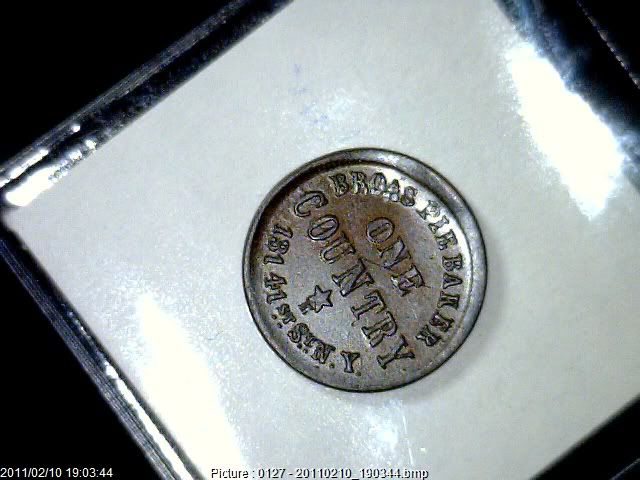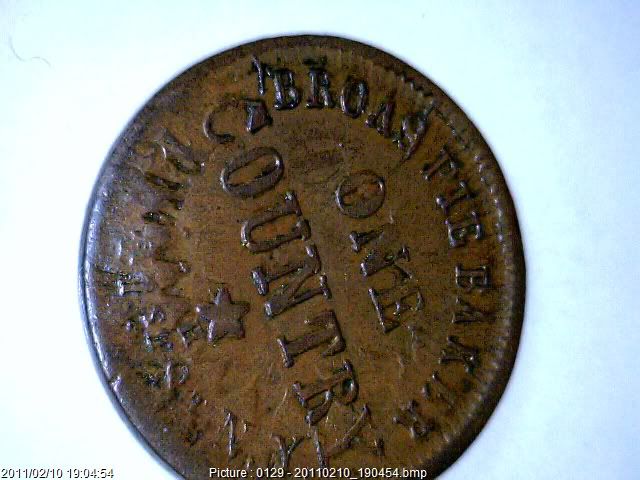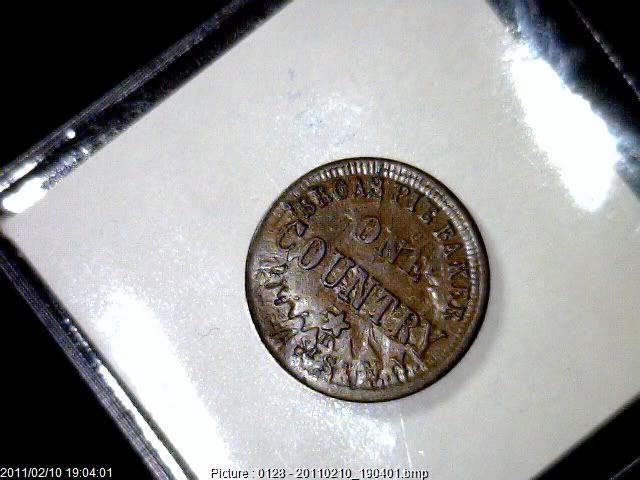Token with 2 reverses?
the token below is one posted by coinsarefun showing an indian head obverse with the store card reverse.. one the reverse is a heavy clash of the obverse..
the 3 photos on the bottom are a token I found one reverse has the IHC clash as in coinsarefun's photo and the other side is a reverse without the clash.. the middle photo is just a closer shot of the clash side
my questions are
1. Is this a known token?
2. How did this happen?
Thanks
Ken
Yes, I used to own this one. You can see the die clashes and heavy die cracks
 >>
>>
here's mine
How about a broadstrike for broadstruck ( looks broadstruck to me anyway )



the 3 photos on the bottom are a token I found one reverse has the IHC clash as in coinsarefun's photo and the other side is a reverse without the clash.. the middle photo is just a closer shot of the clash side
my questions are
1. Is this a known token?
2. How did this happen?
Thanks
Ken
Yes, I used to own this one. You can see the die clashes and heavy die cracks
 >>
>>here's mine
How about a broadstrike for broadstruck ( looks broadstruck to me anyway )



If you can't swim you better stay in the boat.......
0
Comments
Broas Bros. token dies were used extensively, and come in greatly different die states. Die clashing and die cracking is commonly seen.
Some of the heavily cracked dies are so common that one wonders how such a die could have stayed in use for so long. There is a theory that a die was made the regular way but then broke after use. Because a large coinage was anticipated, the coin then took this broken die and used it to make a hub. That hub, which showed evidence of the die cracks, was then used to make multiple working dies, all of which had the appearance of die cracks on their surfaces but were structurally sound within. They were then used to make many tokens.
TD
The middle photo is a close up showing the IHC obverse clash which lead me to believe it was paired with a normal die at one time. The 1st and 3rd photos are the 2 reverse dies. Is this a known mule for this token or something new?